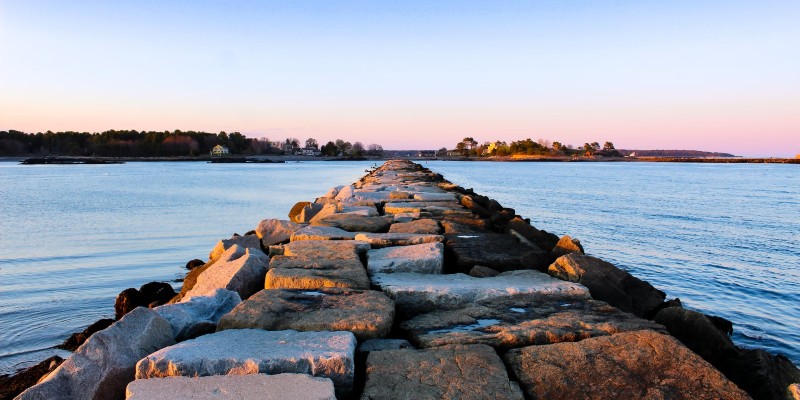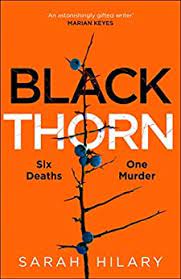It is not the greatest moment in Hitchcock’s Suspicion but it’s a good one: when Joan Fontaine fends off Cary Grant as their car skirts dangerously close to the edge of a cliff. We watch in horror to see what happens next. That deadly stretch of road with its jagged drop to the sea, the reckless speed at which Johnnie is driving and Lina’s terrified conviction that he is a killer add up nicely enough on their own, without our suspicion that Hitch was rooting for an ending where Johnnie pushes her out.
Suspicion is based on Before the Fact, an English novel by Anthony Berkeley Cox writing under the pen name Francis Iles. The novel has an ending far closer to Hitchcock’s preference but no hair-raising race along a razor-blade of a road between dry land and deep water. Rather the novel’s ending plays out at the lethal threshold between Lina’s love for Johnnie and her urge towards self-sacrifice – a liminal space of another, less literal kind.
Within a genre that relishes grey areas and tipping points, it is perhaps not surprising that crime novels so often use cliffs, coasts and liminal spaces to explore what drives us, or might drive us, over the edge.
There is of course Agatha Christie’s And Then There Were None, where eight people receive mysterious invitations to a small, isolated island where they take turns to fall prey to a killer. The shore and sea play important parts in the story, and are among the first things that spring to mind when recalling the plot.
Rebecca is perhaps the most famous thriller set beside a sea where mists roll in, boats are beached and waves threaten almost hourly to reveal the deadliest of secrets. There are other crime novels too where the threshold between land and water is used to great effect, luring us closer even as we suspect danger lies ahead.
In Deep Water by Patricia Highsmith, cuckolded husband Vic Van Allen starts a rumour that he may have murdered a man. The rumour becomes a daydream and the daydream becomes a plot to carry out just such a murder. Having successfully despatched one enemy in a swimming pool, he advances to a second murder, throwing his wife’s new lover from a cliff before weighing his body and hiding it in water. None of the tension sits on the surface here, yet the whole story ripples with it. Highsmith traps us in the undercurrent of what some call ‘evil’, drawing us further into her nightmare and towards a conclusion that’s unguessable yet entirely convincing—the only conclusion in fact which we would accept.
In Your Blue-Eyed Boy by Helen Dunmore, 39-year-old Simone is fending off bankruptcy, finding her feet as a local magistrate and trying to keep her family safe from blackmail. Much of this battle is fought in bleak marshland where bodies have been lured and lost for centuries. The blackmail has the effect of pulling Simone back to summers spent near very different water, in a small New England coastal town. Caught between her past and present, with the danger inching ever closer, Simone must navigate dark waters in order to survive.
The Night Season by Chelsea Cain pits her protagonists Archie and Susan against a backdrop of rising floodwaters and deadly toxins wielded by an ingenious psychopath. The setting itself is a masterclass in how to establish suspense by using landscape and natural disaster: permanent dusk, steamy streets, falling rain and rising floods. Add to this the spectacle of a derelict fairground and – best of all – a flooded aquarium, and you may never look at water the same way again.
In Serenade by James M. Cain when his cast are cut off by floodwaters, the novel takes a sudden turn towards danger. From bullfighters and brothels in Tupinamba via a cafe-bordello in Acapulco, John Howard Sharp and Juana seem destined to inhabit dry desert settings until a storm breaks and rising water traps them in a Catholic church where, drunk on sacramental wine, they desecrate the shelter in unforgettable ways. The fact that this noir, surely Cain’s greatest, is fraught with suppressed homosexuality, makes the metaphors of both desert and irrepressible water all the more effective.
In two fantastic novels by Mo Hayder, Ritual and Skin, her central character is a police diver who is sent more than once into the murky depths of Bristol’s harbour where all manner of strangeness lurks. There is undoubtedly something about bodies of water and what they hide that fascinates crime writers and readers alike.
Laura Lippman’s Sunburn is another noir where water creates a tipping point for the story’s plot. A trip to the beach at Ocean City provides Polly with an opportunity to flee her brutish husband and catch a ride to a small town in Delaware. Belleville represents the threshold between city and coast: ‘it’s like this whole town was put together from someone else’s leftovers’. It is a place that draws people with problems, too. A place where, we suspect, a thousand stories are stewing under the surface.
The seaside at the heart of Brighton Rock by Graham Greene is a place where people go for a day rather than live for a lifetime. A place of holidaymakers, secret liaisons and escapes from reality, often marked by outbursts of passion or violence; kiss me quick slides into kill me quick, to a soundtrack of drunken fairground music; over-sugared, sunburnt, deadly.
Those who plan to escape more scrupulously might like to make for Greece or the islands nearby. Just look out for hapless egotistical holidaymakers who can’t see the noose in front of their own neck, such as Paul in Sabine Durrant’s Lie With Me. A reminder that no man is an island but, should he find himself on one, he might wish he’d been better at making friends.
One final noir, then, where the liminal space is laid out in the opening sentence: ‘It was good standing there on the promontory overlooking the evening sea, the fog lifting itself like gauzy veils to touch his face.’ When Dix Steele finds himself In A Lonely Place, his dreamlike awareness of the ‘dark restless waters’ and ‘pale waste of sand’ persuade readers of Dorothy B. Hughes’s 1947 novel that something is very wrong with her protagonist, long before the action unfolds. It is as if in this moment spent contemplating the threshold between land and sea, her disturbed anti-hero discovers himself on the brink of an awkward and incomplete self-awareness which will make what follows all the more monstrous.
*


















